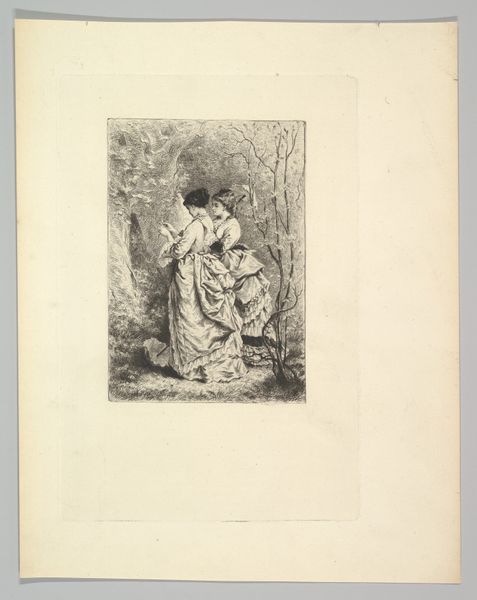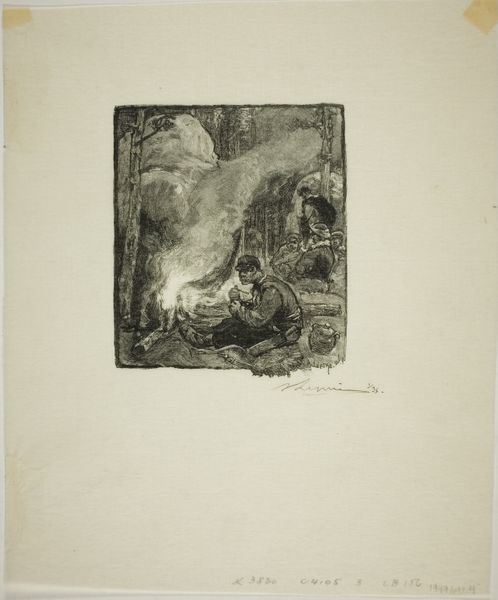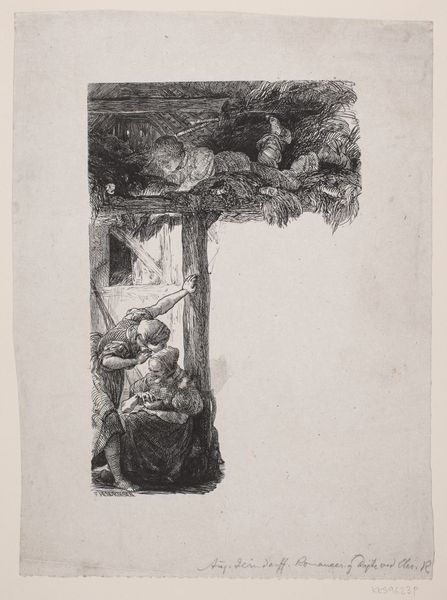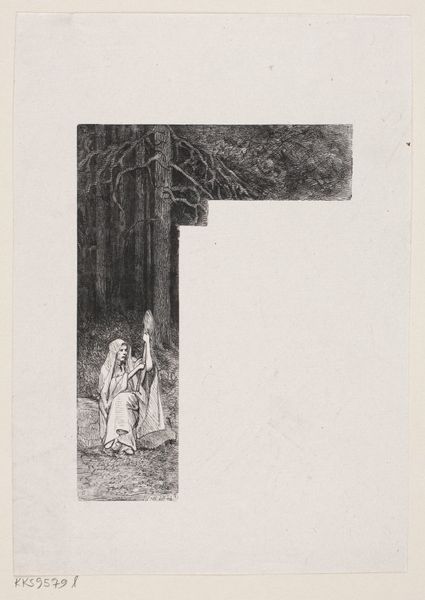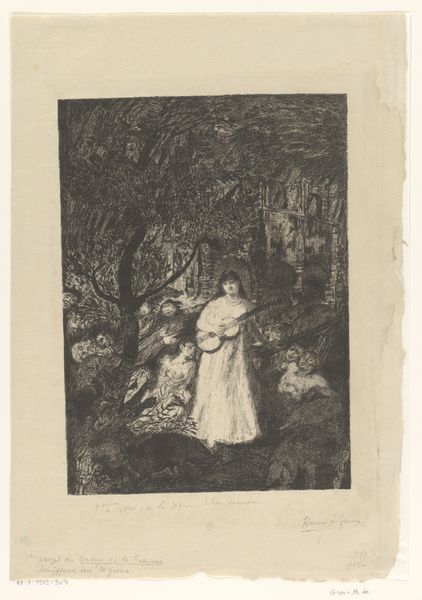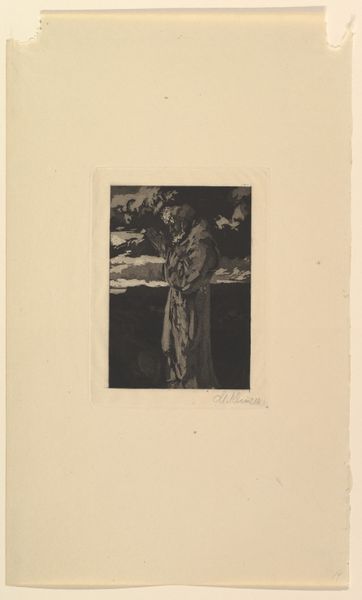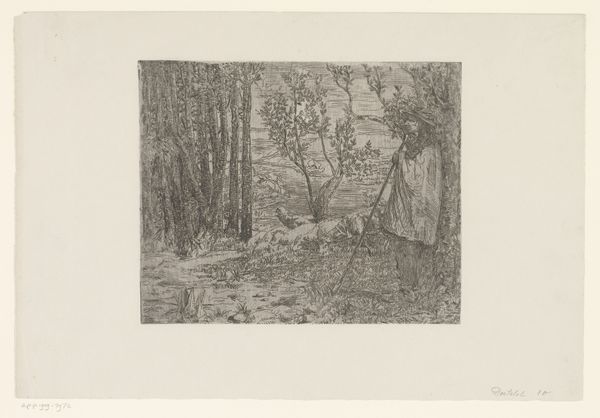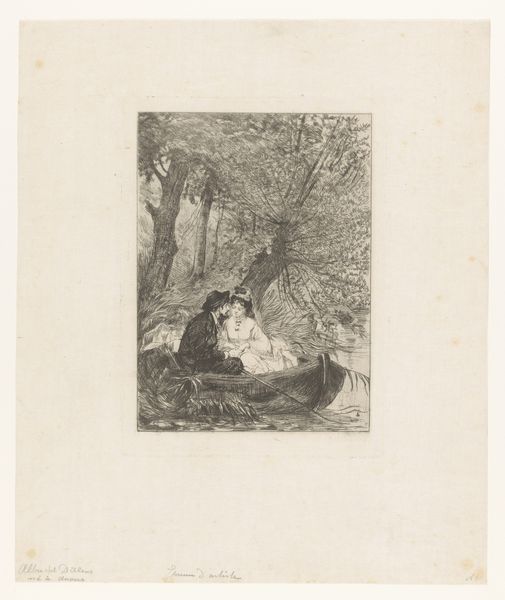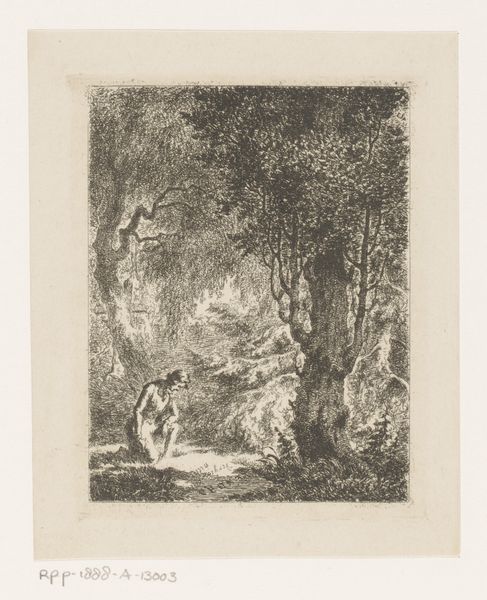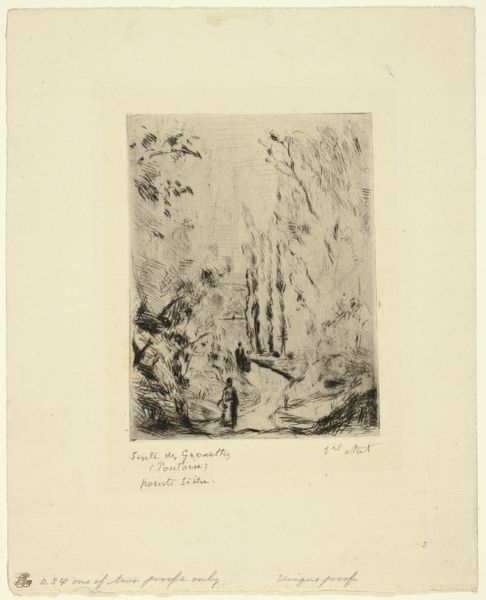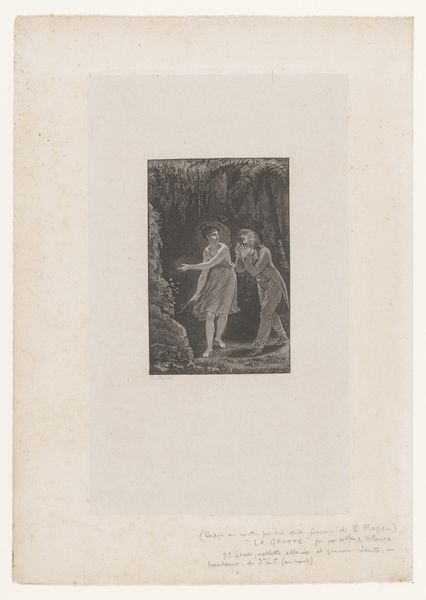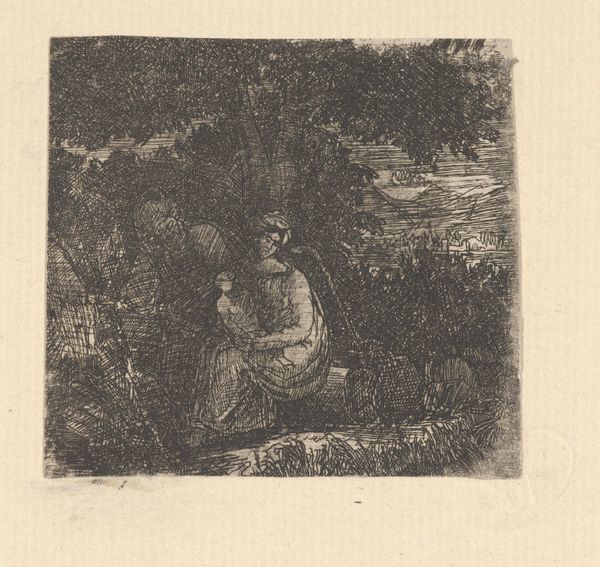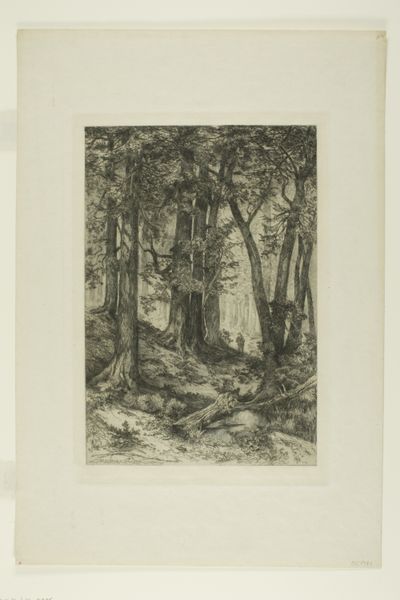
drawing, print, etching, paper
#
drawing
# print
#
etching
#
landscape
#
paper
#
france
#
realism
Dimensions: 234 × 163 mm (image); 246 × 171 mm (plate); 519 × 345 mm (sheet)
Copyright: Public Domain
This print, "Environs of Metz," was made by Charles-André Malardot sometime in the mid-19th century, using a technique called etching. Etching involves covering a metal plate with a waxy, acid-resistant ground. The artist then scratches an image into the ground, exposing the metal beneath. When the plate is dipped in acid, the exposed lines are eaten away, creating grooves. Ink is applied to the plate, filling these grooves, and the surface is wiped clean. Finally, paper is pressed onto the plate, transferring the ink and creating the print. What’s interesting here is the way this process allowed Malardot to capture the fine details of the natural environment, from the rough texture of the rocks to the delicate foliage. The labor-intensive process mirrors the slow, geological time that formed the landscape itself. Looking at works like this, we can appreciate how printmaking, often considered a ‘lesser’ art form, demands tremendous skill and provides a unique window into the world.
Comments
No comments
Be the first to comment and join the conversation on the ultimate creative platform.
